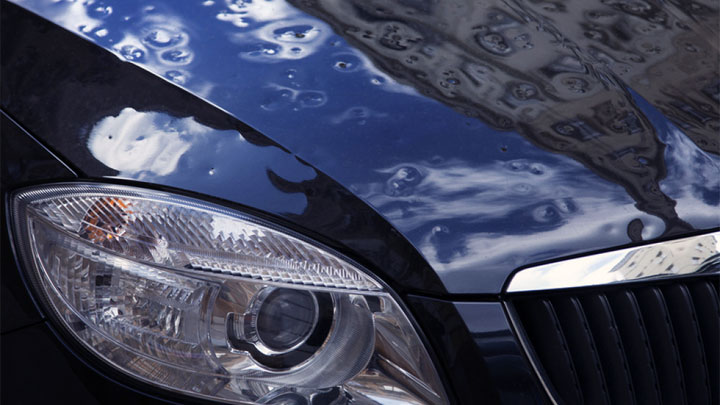Last Updated on June 6, 2022
Combustion engines are not machines that you can tune perfectly and then expect to run that way forever. They need constant readjusting to run efficiently. Technology in modern cars works to make these small adjustments as you drive.
Sometimes, even the most advanced systems cannot correct a problem that develops in your engine. When the issue is bigger than your autocorrection systems can handle, your check engine light will turn on, and the vehicle computer will store a code.
A P0174 code indicates that your engine is running lean in bank 2.
The phrase ‘running lean’ means that there is too much air and not enough fuel pumping through the chambers. The opposite problem is called ‘running rich.’ Running rich occurs when there’s too much gas and not enough air.
Bank 2 describes the side of your engine block that does not contain cylinder number one. Whether this bank is on the driver or passenger’s side of your vehicle depends on the manufacturer. Refer to your user manual to find it under your hood.
See Also: Bank 1 vs Bank 2 Location
What Does Code P0174 Mean?
A P0174 code indicates that there is either too much air or not enough fuel entering the second half of your engine block. As a result, the ratio of air to fuel inside the engine is not correct. Most vehicles require a balance of 14.7 parts air to 1 part of gasoline as the optimal air-fuel ratio.
When your car stores a code P0174, it means that the discrepancy between the amount of air and gas entering the engine is so large that your fuel injectors cannot fix the problem sustainably. A more significant issue is occurring than a slight influx of gasoline can solve.
Often, a P0174 code indicates a vacuum leak or problem with the fuel pump. Running your engine lean for an extended time can cause it to overheat, run dry, or experience other internal damage. P0174 is not a code to take lightly or ignore.
Related: Code P0171 (System Too Lean – Bank 1)
Symptoms of Code P0174
Any time your vehicle runs lean, you will experience a rough or high idle. There may even be issues with the engine, like:
- Loud coughing
- Sputtering
- Misfiring
If you observe a loss of power or surges of power while driving, that’s another sign that your engine needs more fuel and less air. Sometimes, a car running lean might even stall or stop altogether.
Most of the symptoms are worse at lower speeds or RPMs. When you drive fast, the engine needs a higher air to gasoline ratio. Therefore, at faster speeds, the engine isn’t experiencing a lower proportion of fuel to air as significantly.
Causes of Code P0174
To throw a P0174 code, part of your engine is either letting in too much air or not pumping a large enough amount of fuel. In rare instances, the sensor could be faulty. However, a vacuum leak or problem with the fuel pump is the more common culprit.
Any crack or leak in the vacuum system will allow excess air to flow into the engine. When your car shows code P0174, the leak could also be in the positive crankcase ventilation (PCV) line or at the connection between the vacuum pipes and the PCV valve.
Low levels of fuel come from the fuel pump or the fuel injectors. If the fuel pump is weak or malfunctioning, it won’t push enough gasoline into the engine.
Similarly, if your fuel injectors are clogged or faulty, they can’t keep the air to gas ratio correct. A clogged fuel filter will also prevent the right level of gas from getting inside the motor.
If your vacuum system is free of leaks and you know your engine is receiving all of the gasoline that it needs, you’ll need to check the sensors. You may have a faulty mass airflow sensor, oxygen sensor, or air-fuel ratio sensor.
Is Code P0174 Serious?
A P0174 code can indicate a severe issue. Even if the root cause itself isn’t critical, running your engine without enough fuel will cause further problems. You must act quickly to remedy the situation or expect more extensive, costly damages in the future.
If the issue isn’t corrected, you risk your engine overheating. If your car runs hot for a long time, you risk a blown head gasket, warped cylinders, or related problems that make it impossible to drive.
How to Fix
To clear a P1074 code, you must do whatever it takes to get the right ratio of gas to oxygen flowing into your engine.
First, repair any vacuum leaks or issues with your PCV. Both of these contribute to an excess airflow into the fuel lines.
Second, check your fuel system. Be certain the filters and injectors are not clogged. Ensure that the fuel pump and fuel pressure regulator both work.
If your car still shows code P1074 after re-scanning with an OBD2 scanner, then check your sensors in the area. The mass airflow sensor, oxygen sensor, and air-fuel ratio sensor all affect this problem code





I absolutely love your web sight. You are very knowledgeable but the the main reason is because you are very easy to understand. Whoever writes these has a real gift.
Thanks Barbara! Glad you like it.
My 2001 Rav4 threw po171 and po174. Took it to the Toyota dealer where the service rep read out the codes. He said the first thing to check with these codes is bad fuel. The car has been sitting for some time. I added some gas additive to the fuel tank and will see if it is cures the problem.
Filled my tank 2003 Chevy Avalanche few miles down the road and it started to stall out and then it died completely any thought on maybe being bad fuel.
I was running just fine before the fill up.